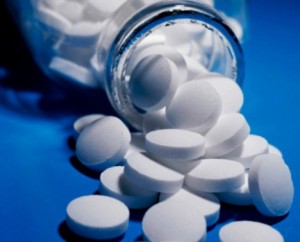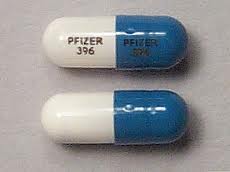Optimum Lithium Levels
At the 2019 meeting of the International Society for Bipolar Disorders, researcher Willem Nolen discussed optimal lithium levels to prevent episodes of bipolar disorder. Based on the limited number of controlled trials that have examined this issue and a survey of experts in the field, Nolen concluded that the standard dosing target to prevent bipolar episodes would be a blood concentration of 0.6 to 0.8 mEq/liter. This concentration could be dropped to 0.4 to 0.6 mEq/liter for patients who responded well to a higher dosage but needed to reduce side effects, and the concentration could be increased to 0.8 to 1.0 mEq/liter for patients who tolerated lithium treatment but showed an inadequate response.
There was no consensus as to optimal blood concentrations of lithium to prevent bipolar episodes in children and adolescents, but some researchers endorsed the same standard recommended for adults. For elderly patients, the majority of researchers recommended a slightly lower concentration of 0.4 to 0.6 mEq/liter, with the option to increase to a maximum of 0.8 mEq/liter in those under age 80 and 0.7 mEq/liter in those over age 80.
Ambien Linked to Emergency Room Visits, Among Other Risks
Zolpidem, better known by one of its trade names, Ambien, is widely prescribed for the short-term treatment of insomnia. It can sometimes cause adverse reactions, particularly among women and the elderly. The Substance Abuse and Mental Health Services Administration (SAMHSA) has reported that over a recent 5-year period, emergency department visits for adverse reactions to zolpidem increased by almost 220%.
Peter Delaney, Director of SAMSHA’s Center for Behavioral Health Statistics and Quality, suggested that doctors should consider alternative strategies for treating insomnia, including improving sleep hygiene by avoiding caffeine, exercising regularly, and sleeping in a quiet, dark room. He also suggested that doctors should be aware of what other medications a patient is taking, and ideally all of a patient’s prescriptions should be collected from the same pharmacy, so the pharmacist can act as a second pair of eyes identifying possible drug interactions.
Women and men metabolize zolpidem differently, and according to Sam Fleishman of the American Academy of Sleep Medicine, many women can still be impaired by the drug 8 hours after taking it. In 2013, after reports of adverse reactions to zolpidem increased, the Federal Drug Administration (FDA) required manufacturers of drugs containing zolpidem to reduce the recommended dose for women by half, from 10 mg to 5 mg, or 12.5 mg to 6.25 mg for the extended-release version. The FDA also suggested halving the dosage prescribed to the elderly, and reducing the recommended dose for men.
Some of the adverse reactions to drugs containing zolpidem include daytime drowsiness, dizziness, hallucinations, sleepwalking, and even “sleep driving.” When combined with antianxiety medications, narcotic pain relievers, or alcohol, zolpidem’s sedative effects can be enhanced to dangerous levels.
Long-term Treatment Response in Bipolar Illness
Willem Nolen, a researcher who has spent 40 years studying unipolar and bipolar disorder, recently retired from his position at Groningen Hospital in the Netherlands. In February, his retirement was celebrated with a symposium where he and other researchers discussed some of their important findings from the last several decades.
Nolen recently published a double-blind randomized study showing that in patients who were initially responsive to monotherapy with quetiapine (Seroquel), continuing the drug (at doses of 300-800mg/night) or switching to lithium were both more effective than switching to placebo over 72 weeks of long-term follow-up.
This study shows that quetiapine, which is only FDA-approved for long-term preventative treatment when used in combination with lithium or valproate (Depakote), also has efficacy when used as monotherapy.
Lithium is Highly Effective in Long-term Prevention
Nolen’s work also adds to an impressive amount of literature showing that lithium is highly effective in long-term prevention. This case is especially noteworthy because lithium was effective even in patients who had initially been selected for their response to quetiapine. (Studies that use this kind of “enriched sample” can only claim that quetiapine has long-term efficacy in those patients who initially respond well to the drug.) The data on lithium are even more impressive since the patients in this study were not enriched for lithium response.
Nolen has also conducted multiple studies of lithium, but optimal doses and target blood levels of the drug remain controversial. The therapeutic range of lithium is usually considered to be 0.6 to 1.2 meq/L, but some have argued that lower levels may still be effective. In a new analysis of those patients in the quetiapine study who were switched to lithium treatment, Nolen found that only lithium levels above 0.6 meq/L produced better results than placebo in long-term prophylaxis. Read more
Possible Antidepressant Effects of Memantine
 In an 8-week study of memantine for augmentation of treatment with lamotrigine for bipolar depression, memantine’s effects were not statistically significant. However, during the first four weeks of the study, while memantine doses were slowly increased, memantine was associated with significant improvements on the Hamilton Depression Rating Scale (HDRS).
In an 8-week study of memantine for augmentation of treatment with lamotrigine for bipolar depression, memantine’s effects were not statistically significant. However, during the first four weeks of the study, while memantine doses were slowly increased, memantine was associated with significant improvements on the Hamilton Depression Rating Scale (HDRS).
From the abstract:
This proof-of-concept study failed to show a statistically significant benefit of memantine augmentation of lamotrigine for patients with BD-D over eight weeks. However, memantine had an antidepressant effect early on in the treatment while its dose was being titrated up. Larger placebo-controlled studies are needed to ascertain optimal timing and dosing for memantine augmentation of lamotrigine in BD-D.
A Suggested Dosing Regimen for Lithium in Children
At the 57th Annual Meeting of the American Academy of Child and Adolescent Psychiatry (AACAP) in October 2010, Bob Findling of Case Western Reserve University reported finding a 58% response rate to lithium in children with bipolar I disorder. He explored three different dosing regimens, and recommends starting children off with 300mg capsules TID (three times a day) for a total of 900 mg/day, and then increasing by a single 300mg capsule every week until there is a good effect or until side effects emerge. The most typical side effects that he saw were headache, nausea, and vomiting.
Starting at a relatively high initial dose of 900mg/day is consistent with the finding that even high doses of lithium are absorbed and transferred into the brain quite slowly. This loading approach appears to be an excellent strategy for rapidly achieving the blood levels necessary for optimal therapeutics in young children. Findling also suggests that an upper limit of blood levels as high as 1.4 mEq/l is acceptable in children because, in his experience, children often appear to need higher doses and blood levels than do adults.
Dosing and Efficacy of Ziprasidone in Adolescents
 At the 57th Annual Meeting of the American Academy of Child and Adolescent Psychiatry (AACAP) in October 2010, Kirti Saxena of Dallas, Texas described a small pilot study that compared rapid- and slow-dose titration of ziprasidone in adolescent patients with bipolar disorder. Both slow and rapid methods of increasing doses resulted in effective treatment of acute manic symptoms, with rapid dose increases achieving improvement slightly faster.
At the 57th Annual Meeting of the American Academy of Child and Adolescent Psychiatry (AACAP) in October 2010, Kirti Saxena of Dallas, Texas described a small pilot study that compared rapid- and slow-dose titration of ziprasidone in adolescent patients with bipolar disorder. Both slow and rapid methods of increasing doses resulted in effective treatment of acute manic symptoms, with rapid dose increases achieving improvement slightly faster.
Editor’s Note: Given the data from patients with schizophrenia that higher doses of ziprasidone are better tolerated than lower doses, rapid dose titration toward 160mg/day or higher in manic patients may be best, because low doses can be associated with agitation or excitation in some patients.
If ziprasidone is being used, it is important that it is taken with food and not on an empty stomach, because its bioavailability and ability to increase blood levels is highly dependent on its being absorbed with food. The variability of ziprasidone’s effectiveness based on whether it is taken with food might explain some inconsistencies in the findings on ziprasidone in the treatment of some syndromes.
Two potential concerns about ziprasidone are worth noting. 1) It has not been approved by the Federal Drug Administration (FDA) for the treatment of acute mania in children or adolescents, even though the placebo-controlled trials were positive. A further review of the data by the FDA is pending. 2) The drug is associated with prolongation of the QTC interval, a measure of electrical activity in the heart. Such a prolongation theoretically predisposes patients to cardiac arrhythmias. However, in clinical follow up studies in adults and children, this has not proven to be problematic, and a study comparing 9,000 adults on olanzapine (which does not increase the QTC interval) and ziprasidone (which does) showed equal degrees of adverse cardiovascular events.
Ziprasidone is clearly worthy of consideration for treating adolescents, because it does not cause weight gain, nor does it increase any of the metabolic indices, such as cholesterol, triglycerides, blood glucose, or insulin resistance, as seen with some of the other atypical antipsychotics. Ziprasidone has recently been FDA-approved as an adjunct to lithium or valproate in prophylactic treatment of adult bipolar disorder.




